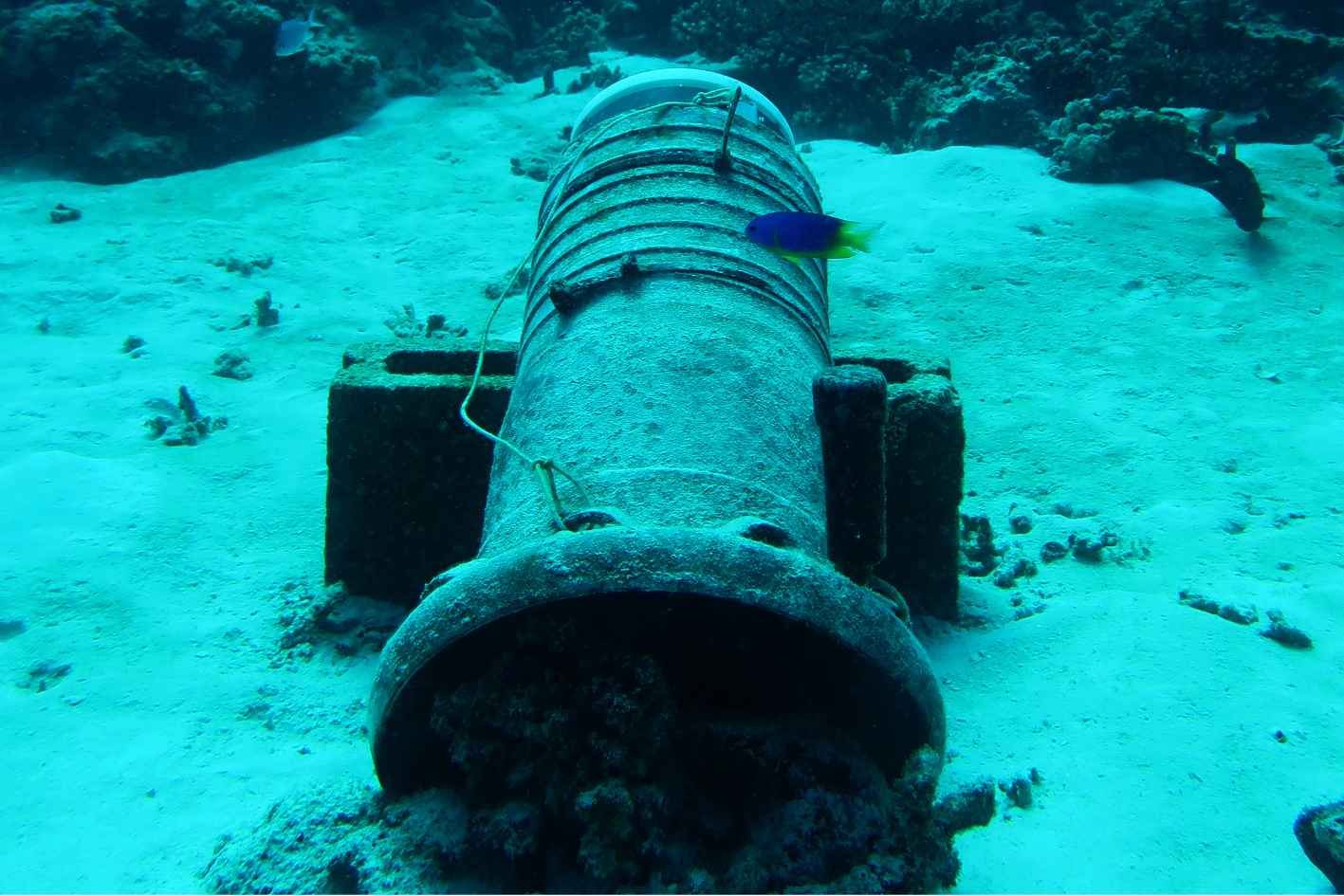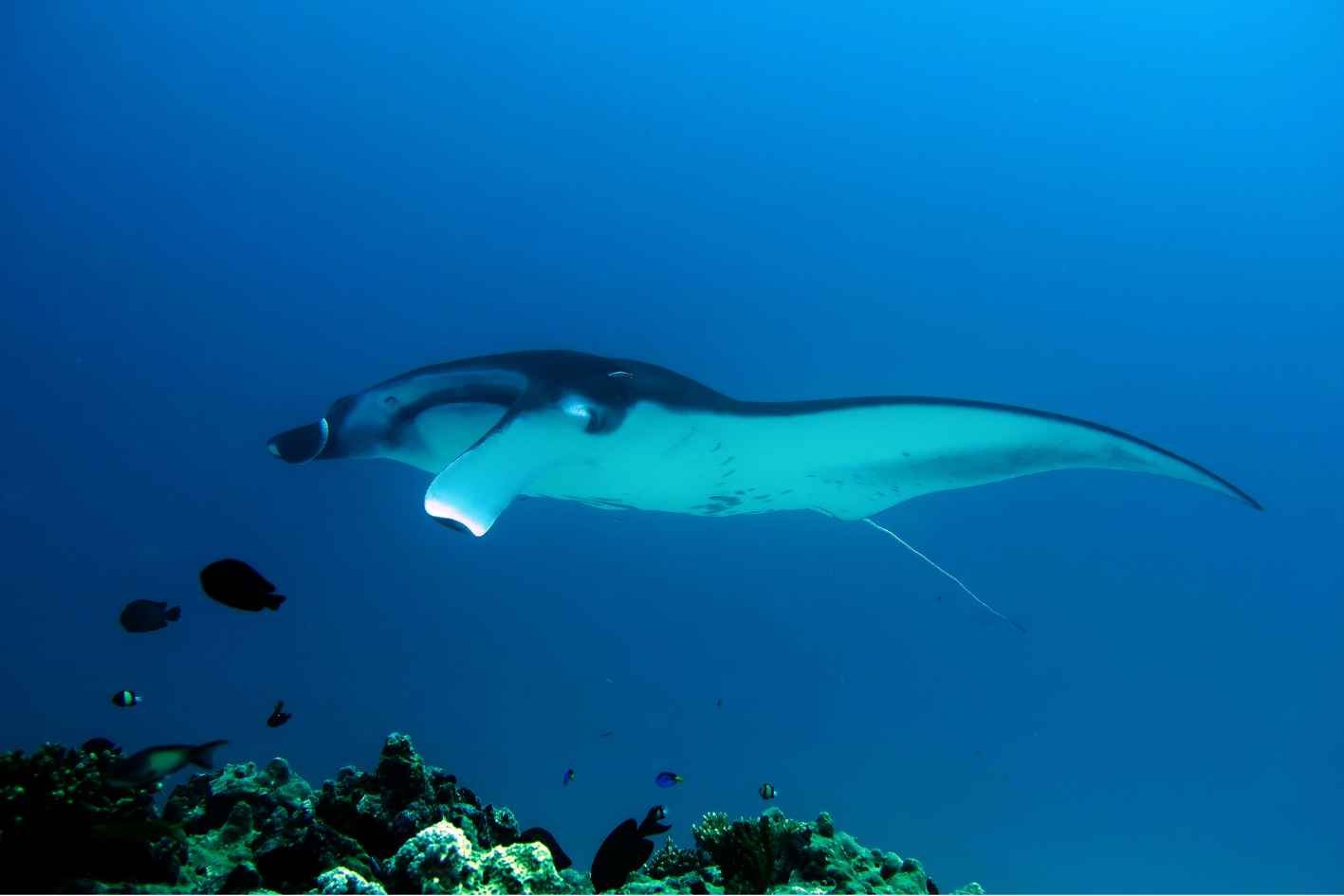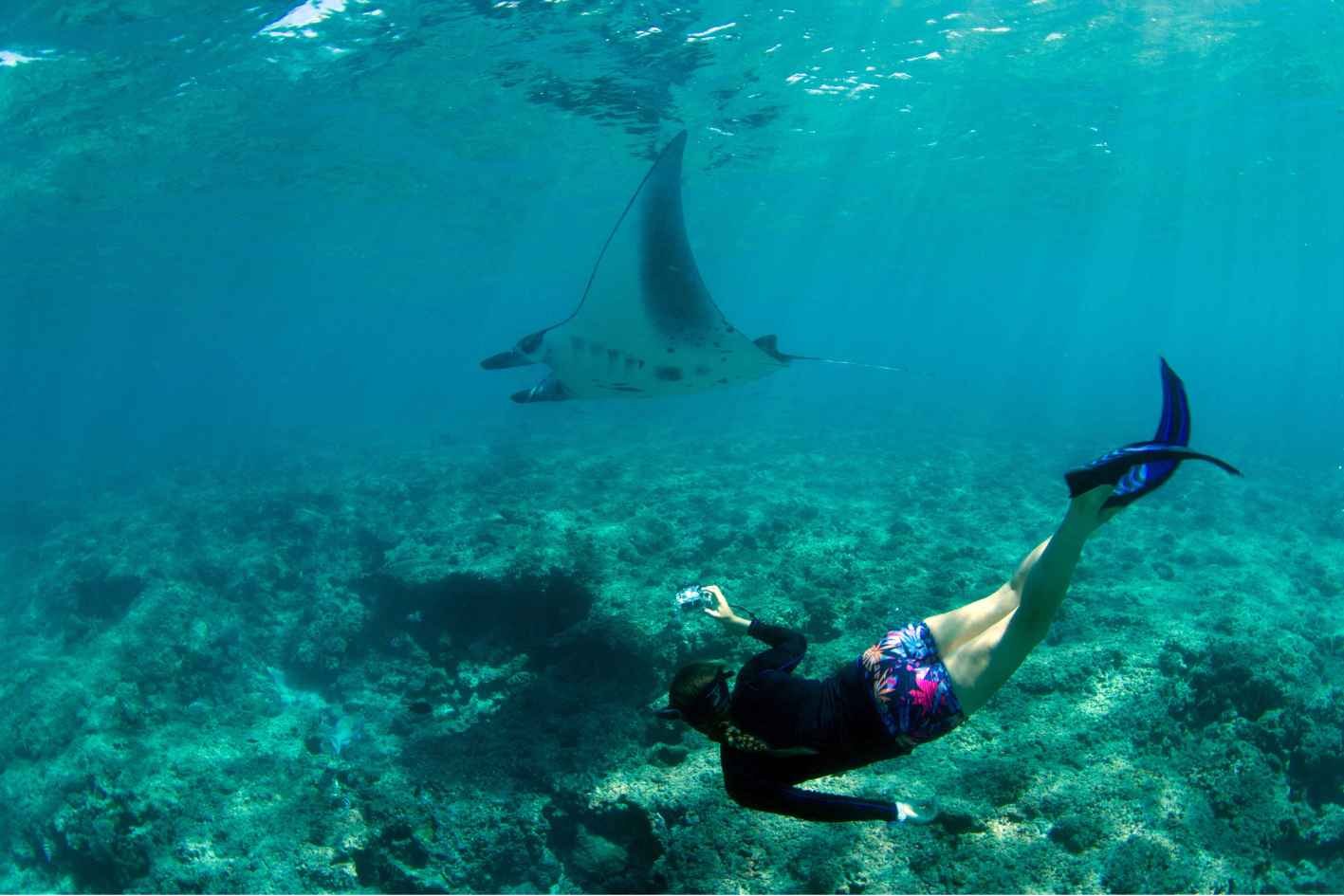Movement patterns and feeding ecology of the reef manta ray (Mobula alfredi) in Seychelles
2015 - 2019
Dr. Lauren Renee Peel
Keywords: Acoustic Telemetry • Residency • Site Fidelity • Environmental Drivers • Elasmobranch • Conservation • Stable Isotope Analysis
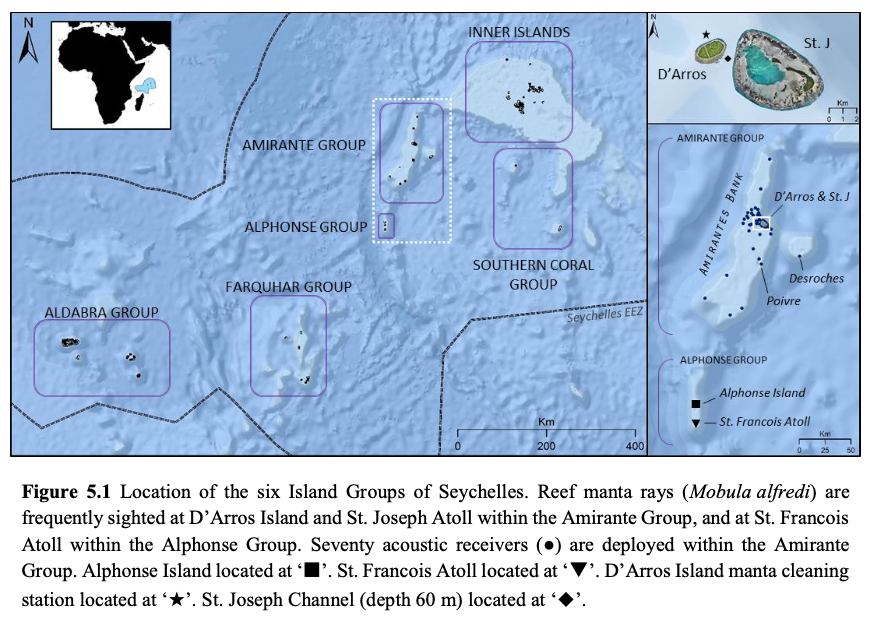
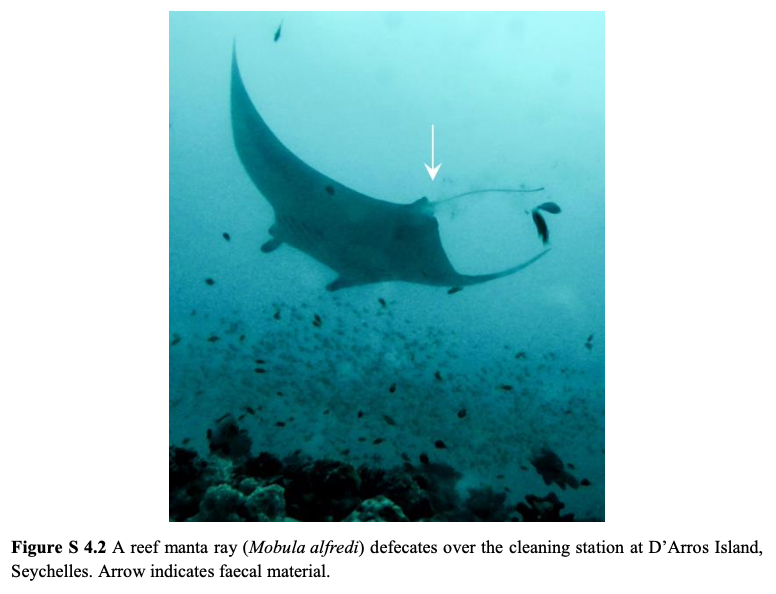
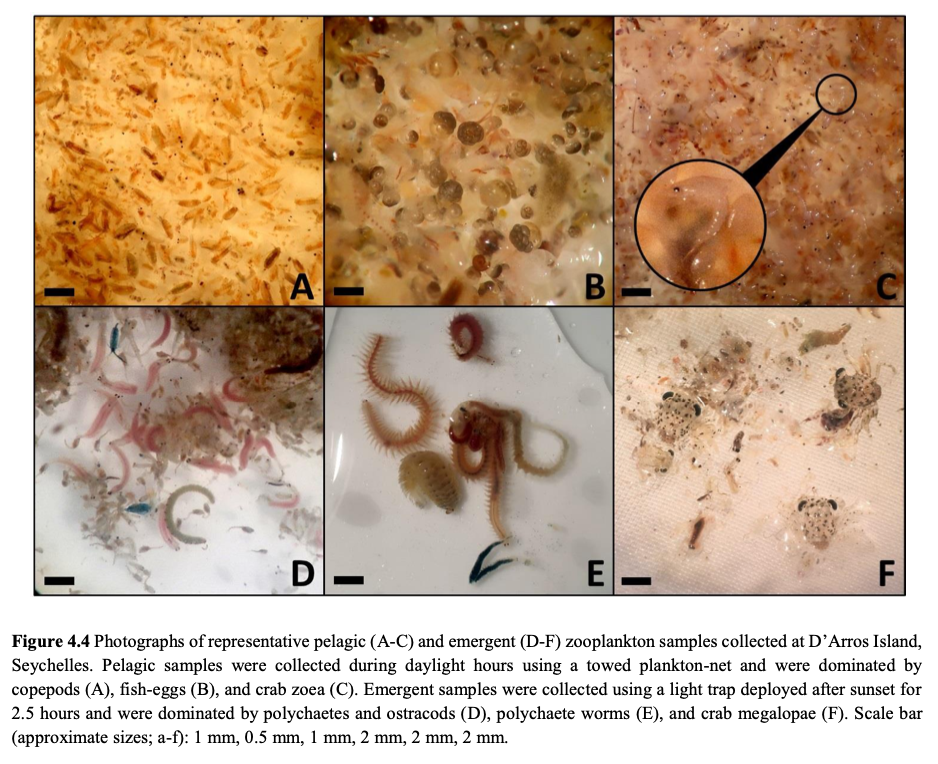
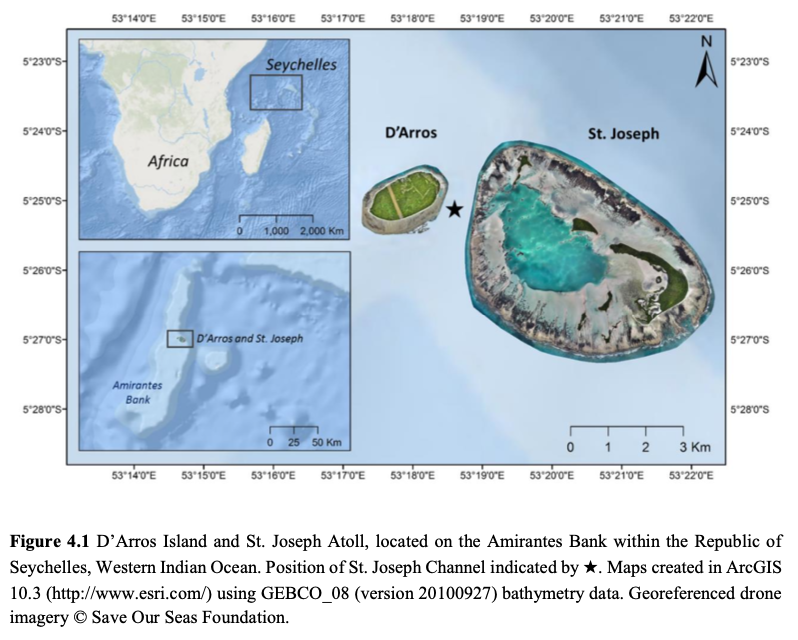
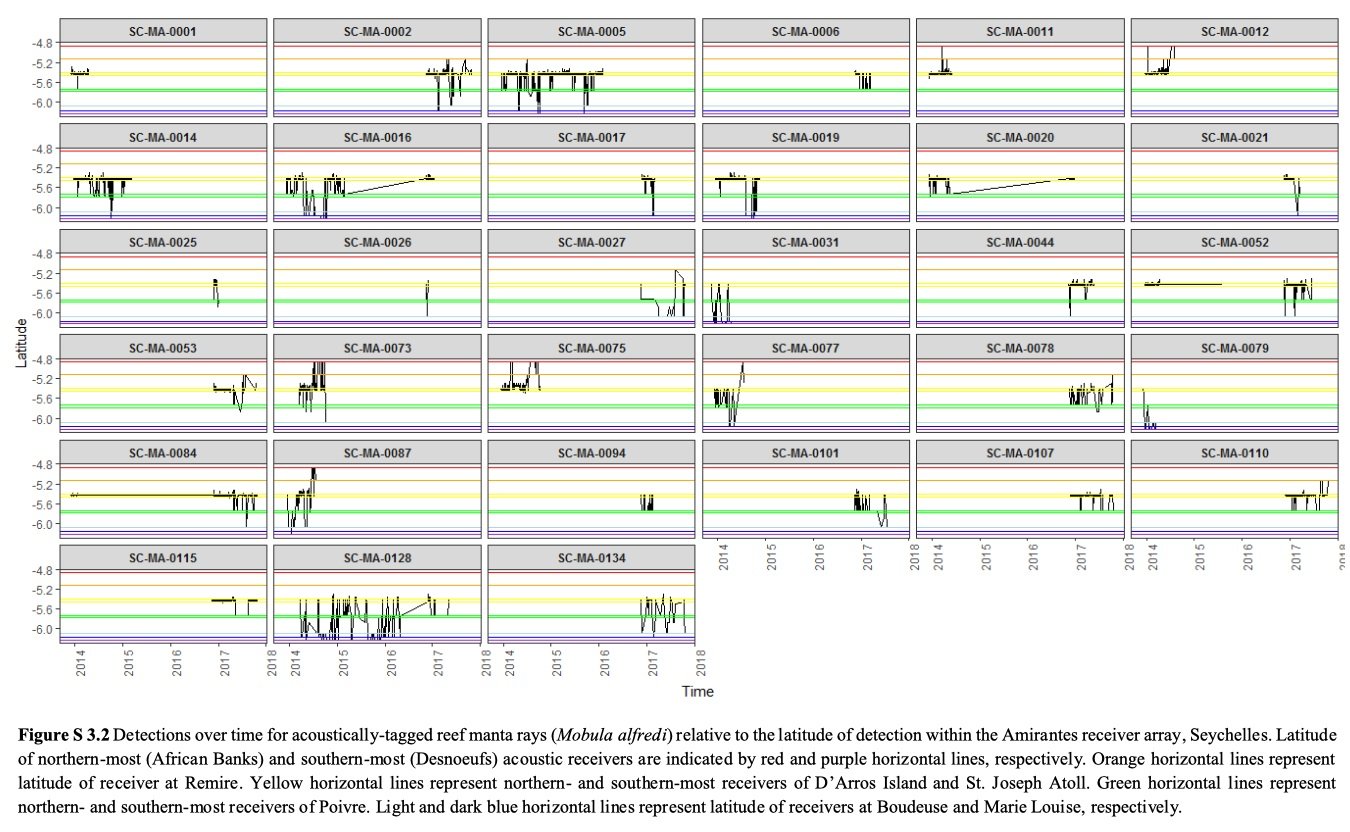


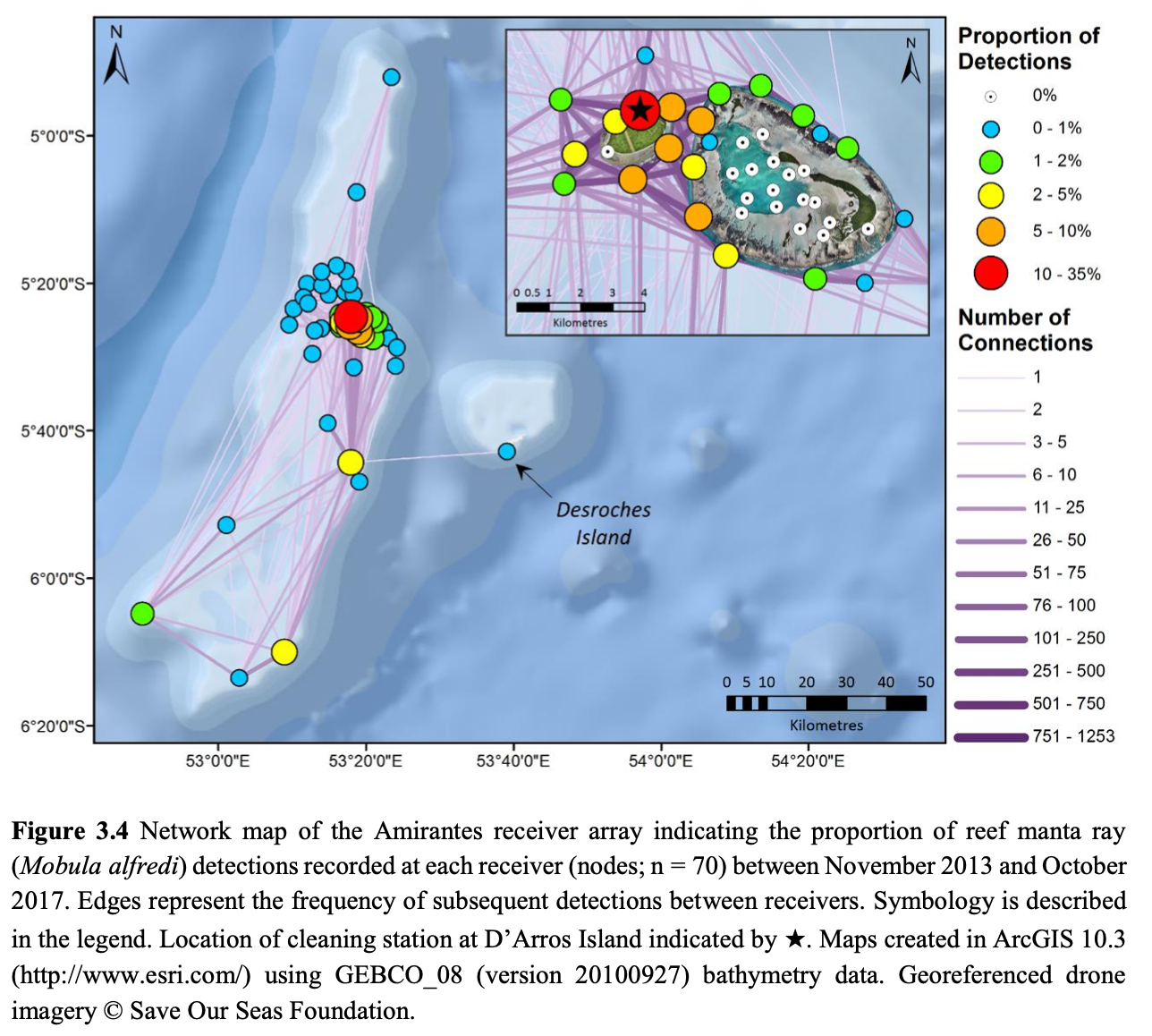
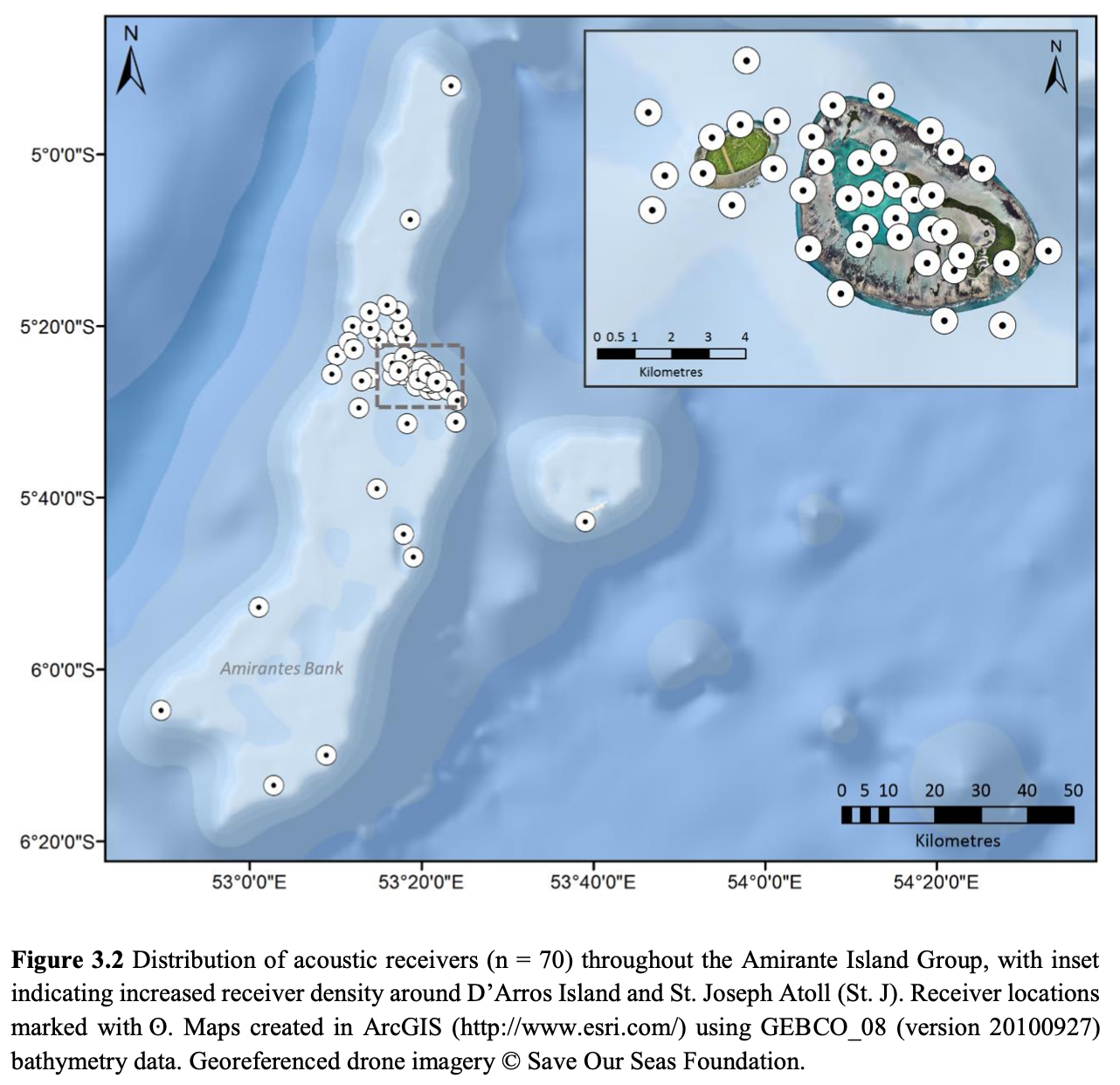
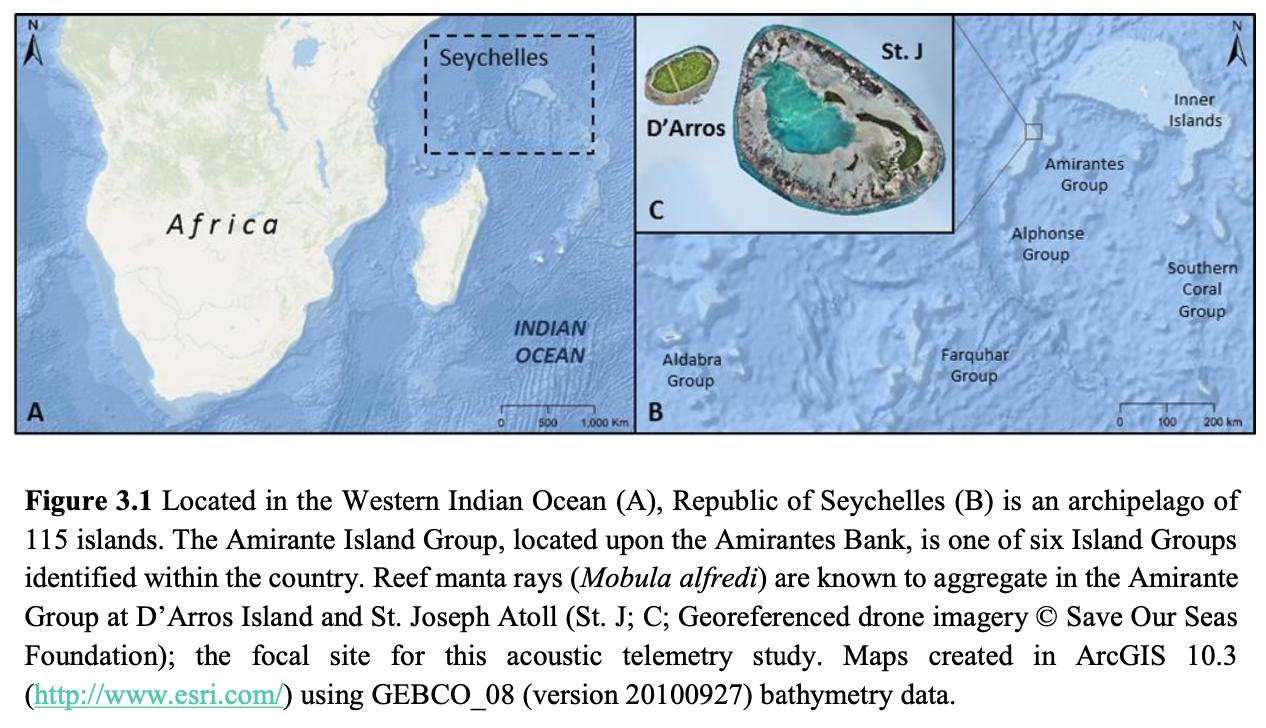
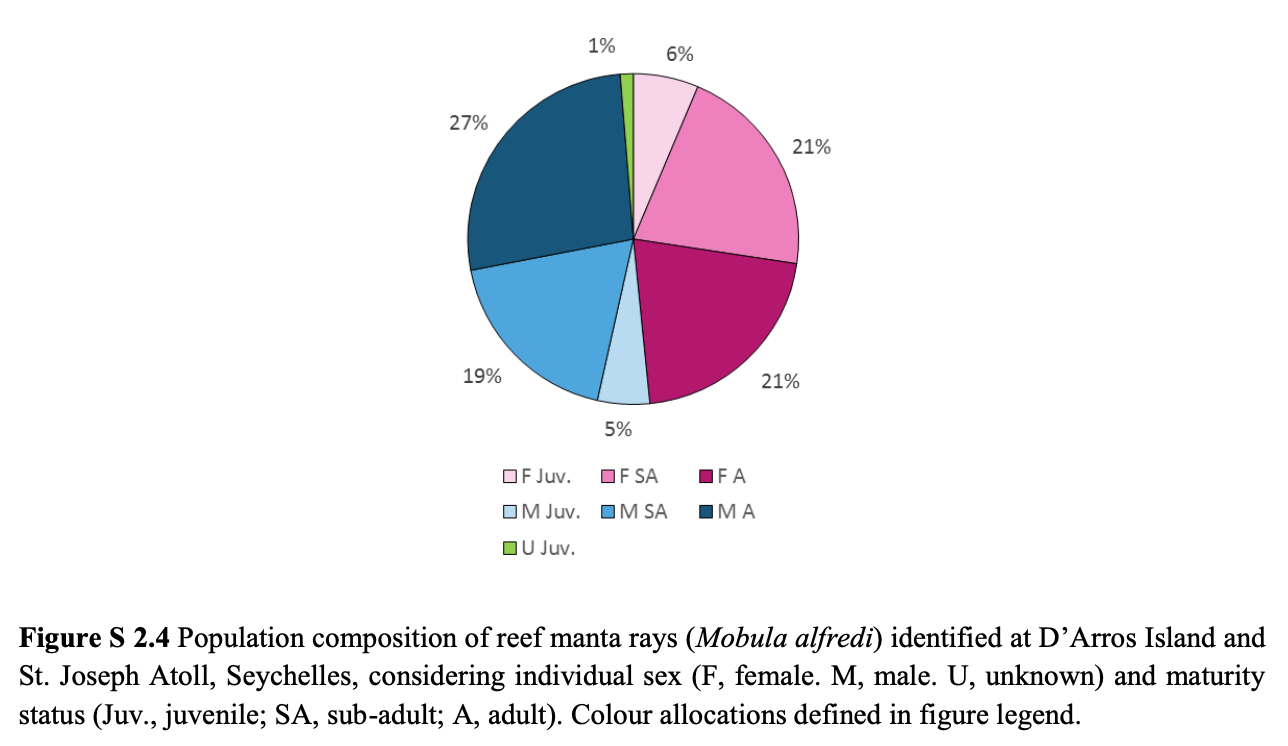
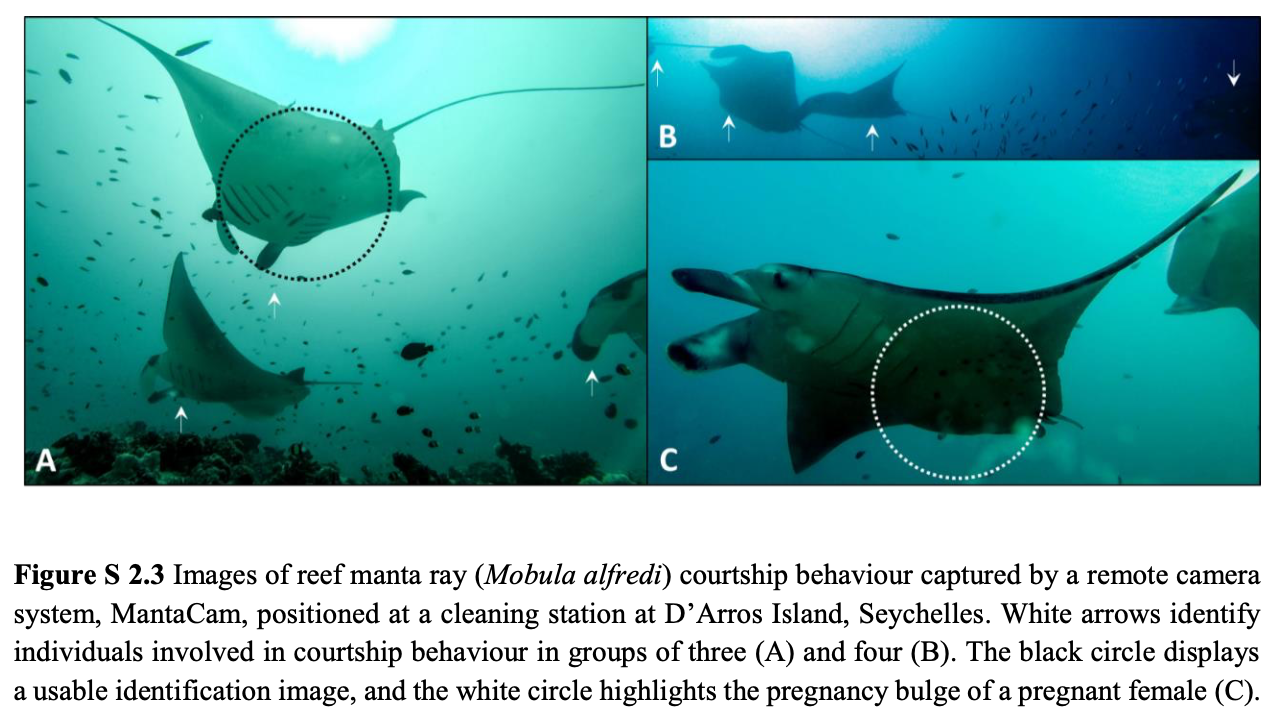
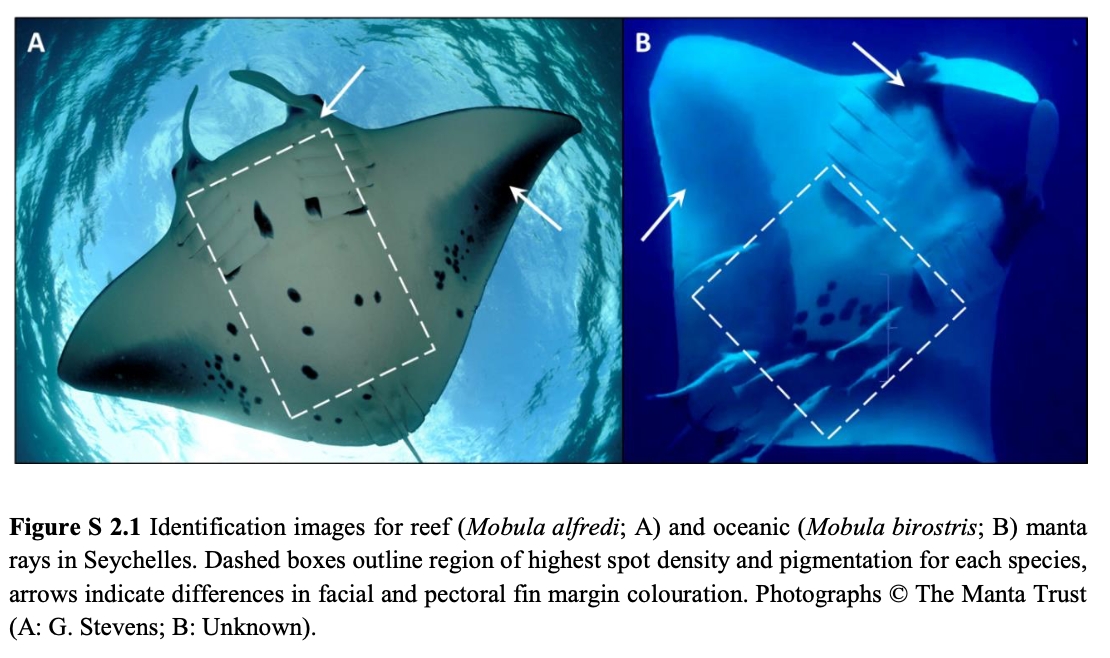
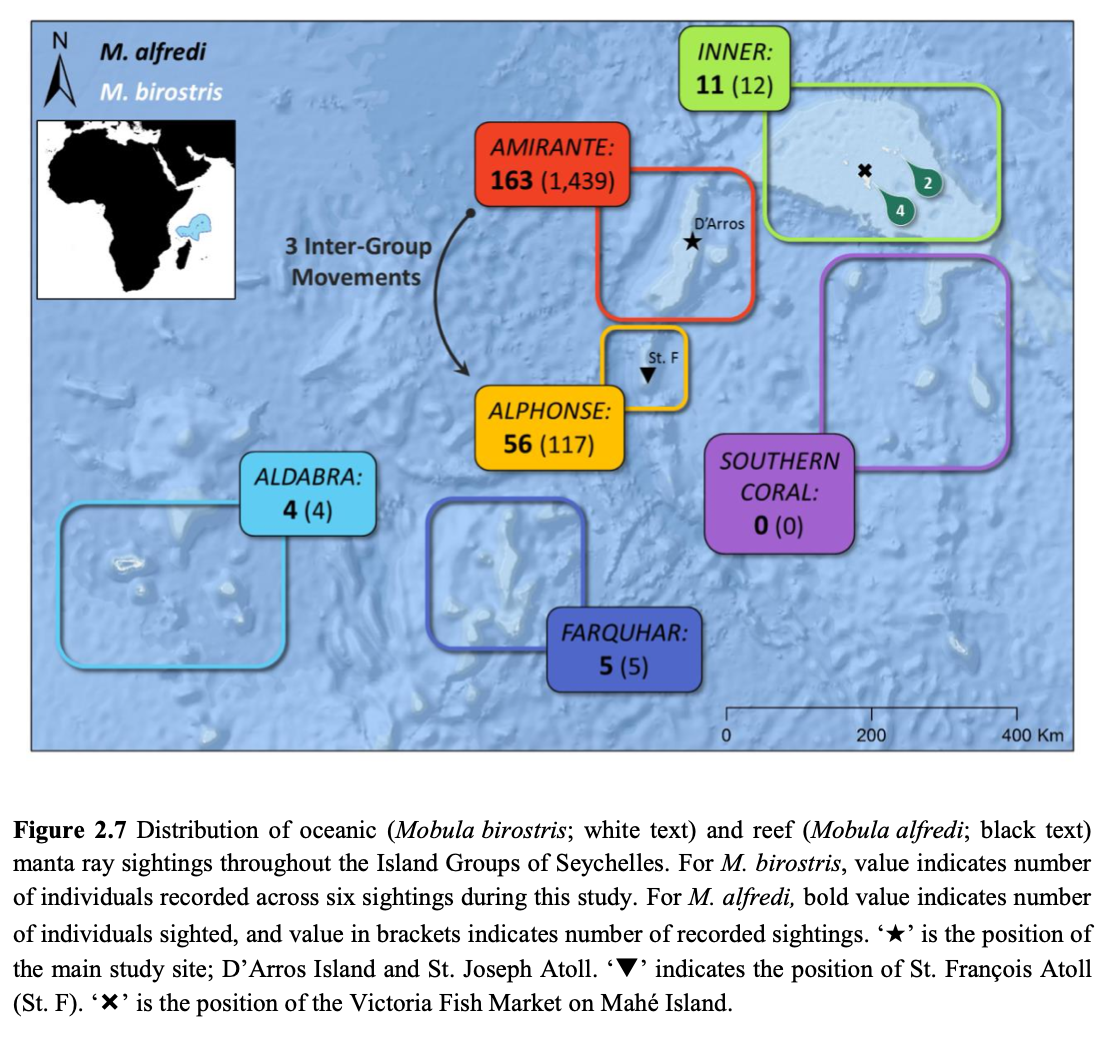
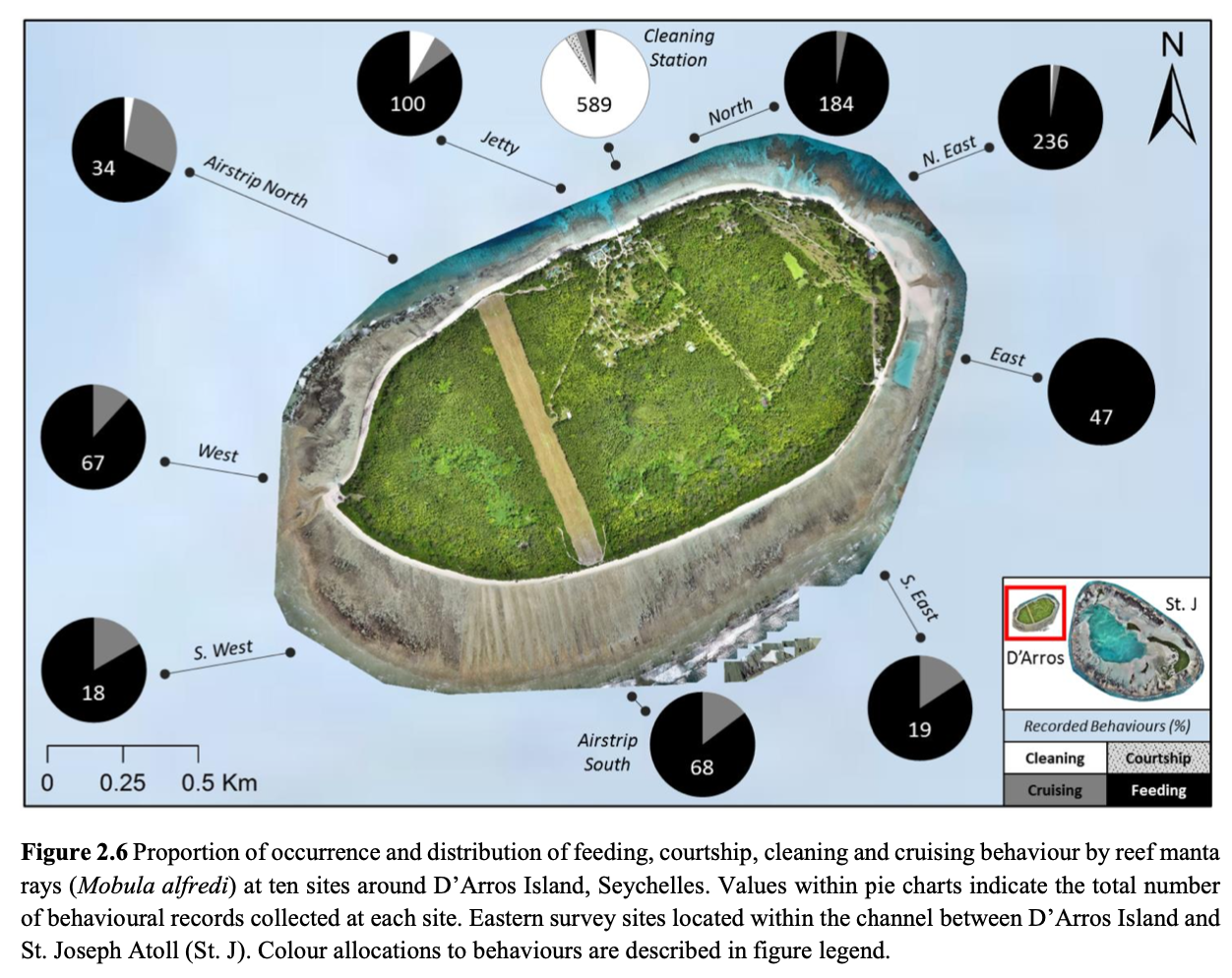
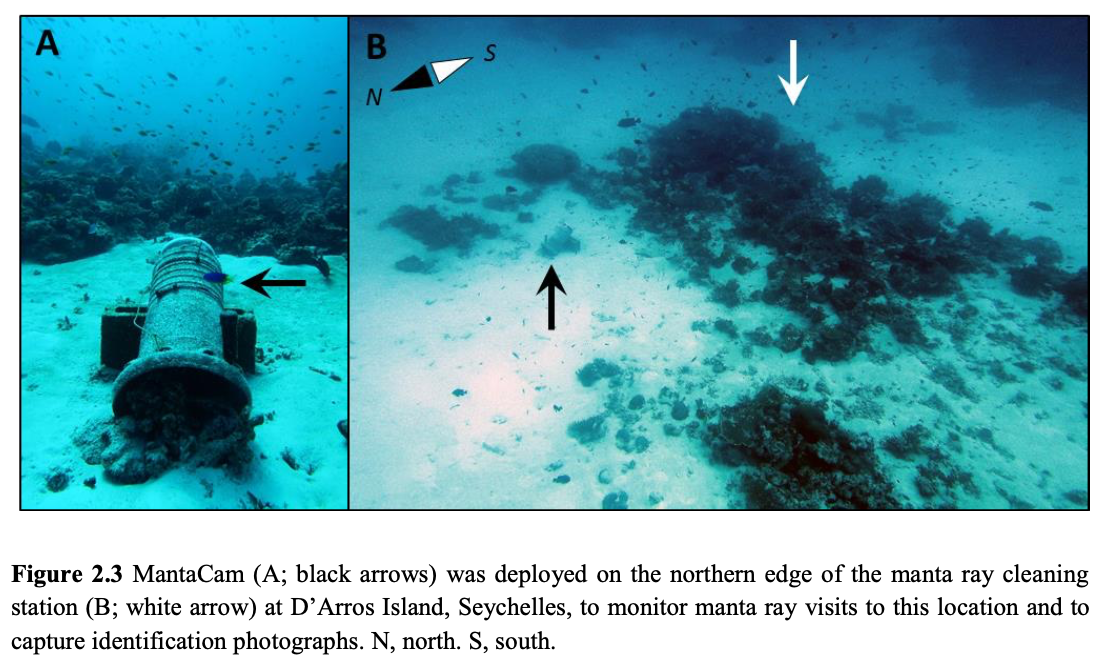
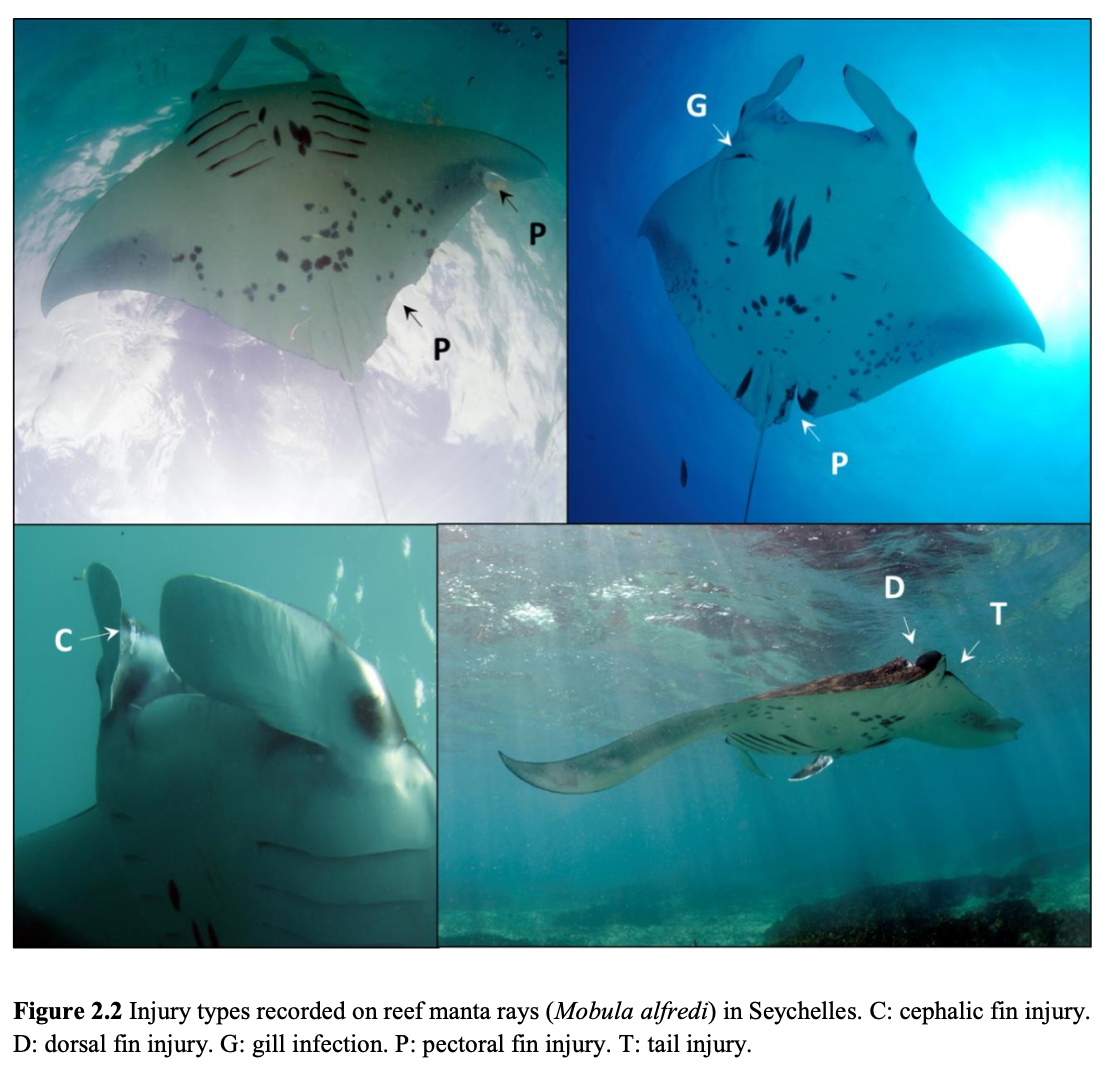
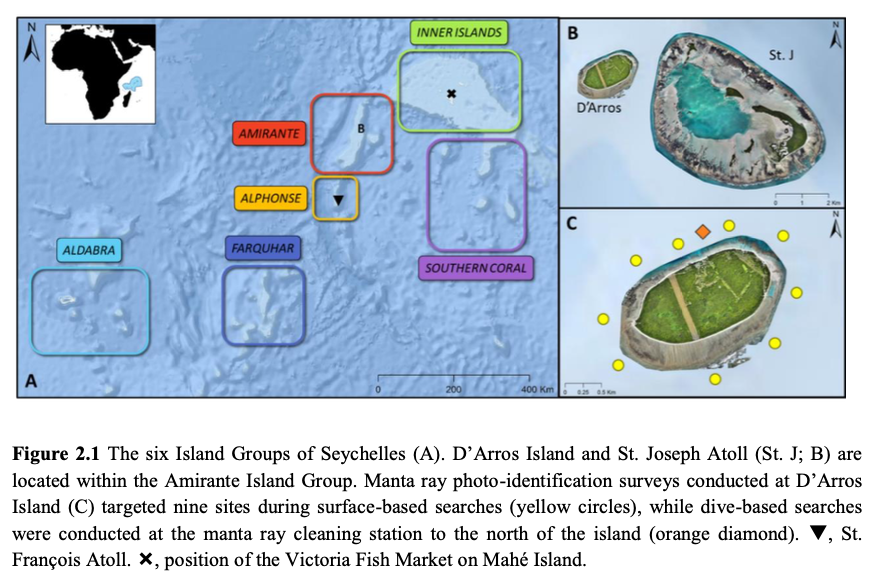
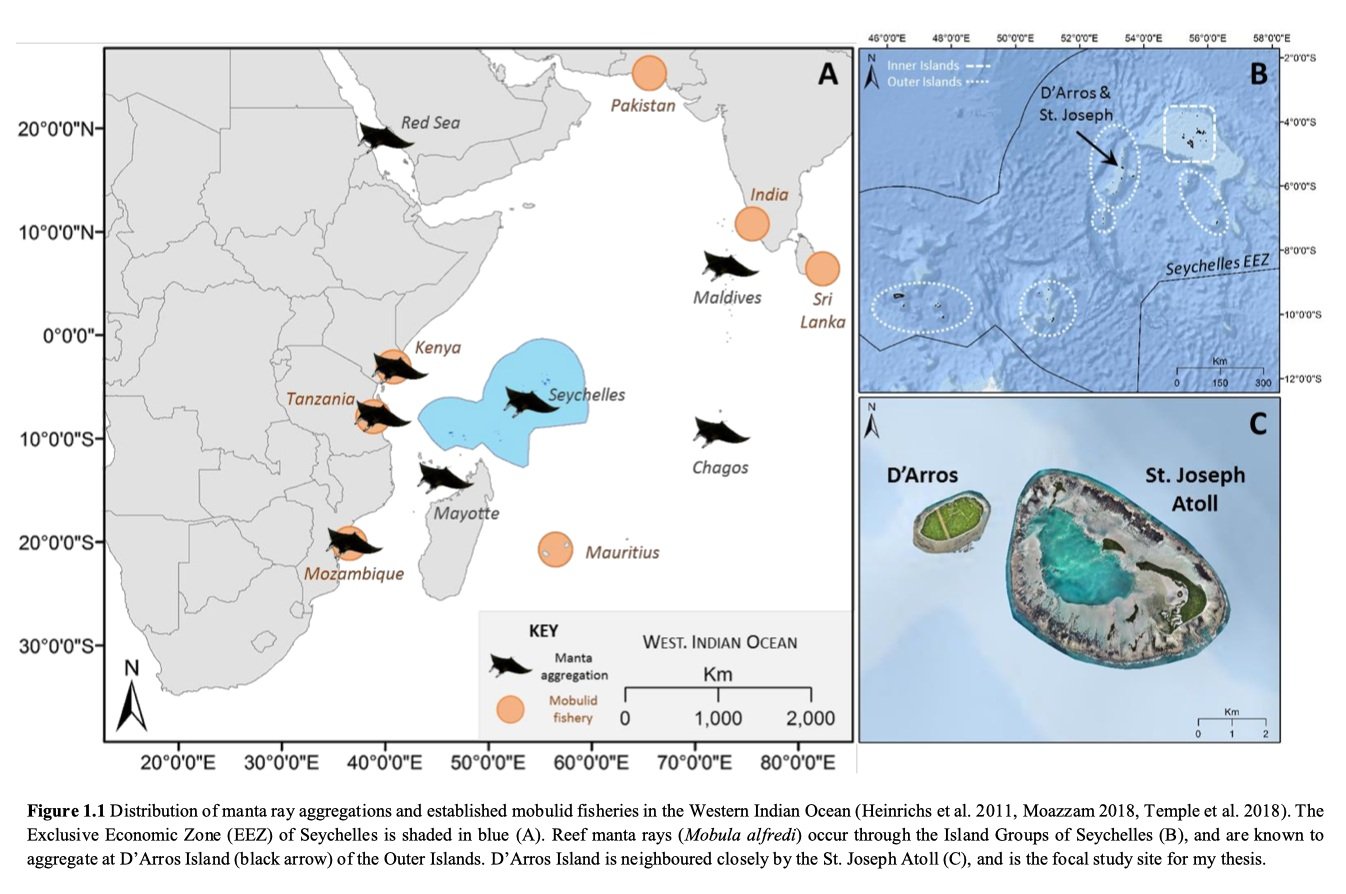

Summary: This study examines the population of reef manta rays in Seychelles, focusing on size, movement patterns, and feeding ecology. The research identifies a small but resident population of 236 individuals, with a high level of residency to specific areas. Stable isotope analysis reveals their unique trophic role, transporting nutrients from mesopelagic environments to reefs. The findings support the need for Marine Protected Areas at key aggregation sites to aid conservation efforts for this declining species in Seychelles.
Abstract
“Reef manta rays (Mobula alfredi) are large, filter-feeding elasmobranchs that are currently undergoing global population declines. Targeted fishing practises that aim to supply manta gill plates to the market for traditional Asian medicine have contributed significantly to population losses in recent decades, and the impacts of by-catch, accidental entanglement and boat strikes further contribute to observed declines. The development of appropriate strategies to adequately manage and protect this species, which is long-lived, late-maturing and slow to reproduce, requires an understanding of their movement patterns and feeding ecology. However, this information can be difficult to obtain as many populations occur in remote, offshore locations that are both complex to access and susceptible to unsustainable fishing pressures.
Here, I examine the size, movement patterns and feeding ecology of a population of M. alfredi in Seychelles. Photo-identification techniques applied over three spatio-temporal scales revealed a small, but highly resident, population of 236 individual M. alfredi (Chapter 2). The majority of individuals were sighted at the primary study site, D’Arros Island and St. Joseph Atoll (67%; Amirante Island Group), and 23% were sighted at St. François Atoll (Alphonse Island Group). The use of a remote camera system deployed at a key aggregation site for M. alfredi at D’Arros Island provided insight into the patterns of habitat use by this species at this location. It also highlighted the value of remote monitoring systems to studies of M. alfredi aggregations at isolated field sites. Passive acoustic telemetry was used to examine the patterns of movement and residency of M. alfredi at the Amirante Islands across medium (10 – 100 km) and small (< 10 km) spatial scales (Chapter 3). Telemetry data indicated that M. alfredi displayed a high level of residency to the Amirante Islands, particularly at D’Arros Island and St. Joseph Atoll, regardless of the size and sex of tagged individuals. Stable isotope analyses were then used to examine the feeding ecology of M. alfredi at the coral reefs surrounding D’Arros Island and St. Joseph Atoll, and the possible influence that foraging strategies may have on the movement patterns of the species (Chapter 4). The significant contribution of pelagic, emergent and mesopelagic zooplankton to the diet of M. alfredi provided support for the hypothesis that this large elasmobranch occupies a unique trophic role at this locality, and can act as a vector for horizontal transport of nutrients into reef systems from mesopelagic environments. Processing techniques for M. alfredi muscle tissue were also optimised to guide future studies of the foraging ecology of this species using stable isotope analyses. Finally, archival satellite telemetry was used to examine the potential large scale (> 100 km) movements of M. alfredi throughout Seychelles (Chapter 5). Tagged individuals did not leave the boundary of the Seychelles Exclusive Economic Zone for the entire period that they were tracked (up to 180 days), and transmitted data further supported the high residency of individuals to the Amirante Islands.
Collectively, these findings highlight the significance of D’Arros Island and St. Joseph Atoll to the small population of M. alfredi in Seychelles. These data also indicate that the establishment of Marine Protected Areas at the key aggregation areas for M. alfredi at D’Arros Island and St. Joseph Atoll (Amirante Island Group), and St. François Atoll (Alphonse Island Group), would benefit management and conservation efforts for all cohorts of the population. Continued monitoring of this population through photo-identification techniques by an increasing network of researchers and citizen scientists spread across the archipelago will ensure that M. alfredi is protected at an appropriate spatio-temporal scale in Seychelles in the future.”
About The Author - Dr. Lauren Renee Peel
Growing up in a rural area of Western Australia, Lauren has always been surrounded by wildlife and cannot remember a time when she wasn’t in awe of the natural world. Her passion for the ocean and its marine life was sparked at the age of five when she visited the Ningaloo Reef for the first time, and this fascination drove her to complete her undergraduate degree at the University of Western Australia majoring in Zoology and Chemistry in 2011.
It was during the completion of her Honours research into the visual system of the Port Jackson Shark in 2012 that Lauren discovered her love for all things elasmobranch and realised that she wanted to make a career out of studying these misunderstood animals and promoting their conservation through education. After completing her Honours year, Lauren moved to South Africa for two years to volunteer for a marine research organisation as a Field Specialist and Internship Manager where she was privileged enough to work with a wide range of marine mega-fauna including dolphins, whales, and white sharks to collect data for a variety of research projects.
Lauren has since returned to Perth to commence her PhD at the University of Western Australia in the position of Project Leader for the Save Our Seas Foundation and Manta Trust’s Seychelles Manta Ray Project. Her research aims to examine the population dynamics, movement patterns, and trophic ecology of the reef manta ray in Seychelles, with a particular focus on the role that D’Arros Island and St Joseph Atoll play in the life history of these charismatic elasmobranchs. Lauren hopes to use the results of her study to not only better understand the biology of reef manta rays in Seychelles, but to assist in the development of effective conservation and management strategies aimed at protecting their populations in this remote region of the western Indian Ocean.
Read more about the affiliate project: SEYCHELLES MANTA RAY PROJECT



